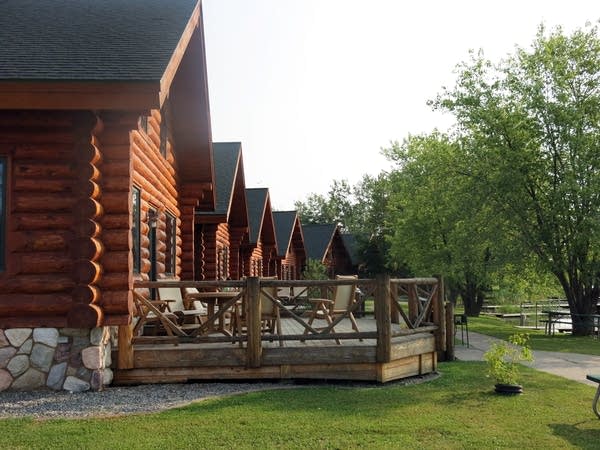Around Lake of the Woods, the man camps are but a memory

Nick Painovich ends most days the same way, whacking squirming walleye in the head with a pair of pliers.
Painovich owns Zippel Bay Resort on the southern shore of Lake of the Woods. All summer he takes loads of anglers to fertile walleye fisheries. In the evening sun he helps them back onto the dock and cleans the catch.
More stories from Lake of the Woods
• Growing algae blooms puzzle scientists
• Terns gamble wrong on 2014 floods
The pliers make a hollow sound, punctuating the walleye's path from lake to bucket to filleting table. The sounds and smells haven't changed since Painovich bought Zippel Bay Resort in 1977. But just about everything else is different about the Lake of the Woods resort industry.
Create a More Connected Minnesota
MPR News is your trusted resource for the news you need. With your support, MPR News brings accessible, courageous journalism and authentic conversation to everyone - free of paywalls and barriers. Your gift makes a difference.
"It was a man camp back then," he said.

Forty years ago Painovich had just 10 cabins, a wooden launch boat and one very ambitious mustache. "It was the '70s," his wife Deanna mused over stacks of old photographs. "It was the time of mustaches."
Now the resort has 22 luxury cabins, a floating gazebo and a small fleet of fiberglass launches. Painovich said the changes reflect the evolving resort market on the lake.
Lake of the Woods is a long way from just about everywhere. It's 300 miles north of Minneapolis, and 80 miles from the nearest Walmart. When Painovich was young, fishing on Lake of the Woods was a real wilderness experience. Groups of guys, almost exclusively, came for the beer, the extraordinary walleye numbers and the rough-and-tumble borderland atmosphere.
"We had very generous limits," he said. "You could keep 10 fish."
Since then two things changed. The DNR dropped catch limits on the lake from 10, to six, to just four walleye, and anglers started expecting comfort. They wanted bigger, nicer boats. They wanted new cabins -- amenities.
"People want hot tubs," Painovich said.

Those changing tastes, along with higher taxes, property values and overhead sunk many resorts in Minnesota's other tourist hot spots like Mille Lacs Lake and the Brainerd lakes area. But Lake of the Woods resorts are holding strong.
Painovich said most of the resort owners he knew years ago left their businesses to their kids larger and more successful than they started.
That's a huge relief to Mike Reed, Lake of the Woods County economic development director. He estimates between 50 and 75 percent of the local economy is shouldered by out-of-towners looking for some good walleye fishing.
"We're the walleye capital of the world," he said. "That's our claim to fame."
Lake of the Woods County has the fourth smallest economy in the state, with just 1,544 jobs according to the Minnesota Department of Employment and Economic Development. A third of those jobs come from hotels, resorts and restaurants.
In comparison, accommodation and food service jobs account for less than 15 percent of jobs in Aitkin and Crow Wing counties, which border the walleye tourism hub of Mille Lacs Lake.

Tourism jobs don't pay that well. DEED statistics put the average wage in Lake of the Woods County at just over a half of the state-wide average, dragged down by low-paying service jobs.
"There are a lot of people making $10, $15 an hour," Reed said.
He's hoping to bring more industry and better paying jobs to the region, but in the meantime, resorts are keeping the local economy afloat.
Zippel Bay, and most other area resorts, are far from their man camp roots. Painovich trimmed up his mustache and started advertising in magazines from Illinois to Nebraska. It's a family experience now, but that's not what he credits with the industry's relative longevity.
Decades ago there wasn't much of an ice-fishing business on the lake. Now winter is one of the busiest times of the year. Small cities of ice shanties emerge in late December. Painovich, who started with half a dozen shanties, was one of the first to see potential.
"People said I'd be lucky to recoup my electric bill," he said.
Now he has scores of shanties and a 1,000 square foot igloo bar made of steel and spray foam. He serves cocktails to anglers as they drop baited lines though holes in the bar floor. He plows roads on the ice.
The ice shanty industry grew at the same time as property values, taxes, fuel and other overhead expanded -- at the same time anglers required those expensive amenities. Painovich said the ice saved Lake of the Woods resorts, and in some ways, the whole area.